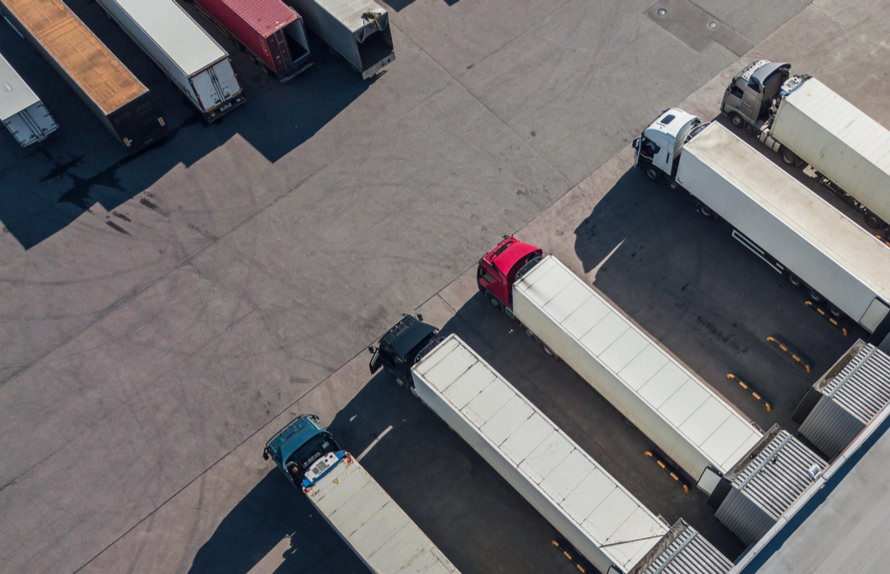
In a sweeping move likely to reshape global commerce for years to come, the United States government announced a new set of tariffs on or around August 1, 2025. These are not minor adjustments—they target dozens of countries with duty rates ranging from 10% to as high as 50%.
For the world of ecommerce fulfillment and logistics, these tariffs represent a seismic shift, challenging business models, profit margins, and the fundamental economics of international trade. This article explores the details of the new tariffs, their immediate and long-term impact on ecommerce brands, and how logistics networks are adapting to a new era of global uncertainty.
What Are the New Tariffs?
The August 2025 tariffs represent the most comprehensive escalation in U.S. trade policy in recent history. Announced by President Donald Trump and set to roll out in stages—starting August 1 for Canadian imports and in full by August 7 for nearly 70 countries—these measures include:
- Country-Specific Rates: Tariffs between 10% and 41% for most trading partners, with some goods from Canada seeing an immediate increase to 35%.
- Targeted Sectors: Essential goods such as steel, aluminum, autos, electronics, and apparel are especially affected, with sector-specific surges for countries like Brazil (up to 50% tariffs on select sectors).
- Abolition of the De Minimis Rule: Previously, U.S. shoppers could import goods valued under $800 duty-free from most countries. Now, all packages, regardless of value or origin, are subject to applicable tariffs.
These tariffs build on months of rising trade tensions and are even more notable for their reach: the rates apply to most of America’s major trading partners outside of a handful of countries with last-minute deals, such as the EU and Japan.
How Immediate Are the Effects?
For ecommerce, the changes are already being felt:
- Effective Dates: Though most tariffs begin August 7, tariffs on Canadian goods start August 1. Goods in transit before these dates (loaded on vessels by the cutoff) may be exempt if delivered by a set deadline.
- Rush to Beat the Deadline: Ecommerce brands and logistics providers report a surge in shipments and order volume as companies scramble to import inventory before the new rates take effect.
- Inventory Chaos: Retailers and third-party logistics partners are engaging in just-in-time inventory maneuvers, rapidly rerouting shipments and clearing customs in bulk to escape higher duties.
Disrupting the Ecommerce Business Model
1. Profit Margins Squeezed
Ecommerce has been defined by its ability to offer consumers low prices and vast choices, often powered by just-in-time, cross-border fulfillment. The tariffs threaten this model in several ways:
- Price Pressures: With tariffs now imposed on every shipment—including small parcels—landed costs rise significantly across thousands of SKUs. Online brands must choose between raising prices (risking demand) or absorbing costs (shrinking margins).
- Peak Season Concerns: Many brands depend on Q4 peak season sales. According to a recent industry survey, 81% of ecommerce leaders rank tariffs among their chief international challenges, predicting a direct hit to profits during holiday sales.
2. Changing Consumer Expectations
- Higher Prices at Checkout: Cross-border shoppers, used to surprise-free orders, are now confronted with unexpected tariffs, slowing conversion rates and increasing cart abandonment.
- Less Inventory, Fewer Choices: Some international sellers may withdraw from the U.S. market or sharply reduce product variety due to increased costs and compliance hurdles.
3. Direct-to-Consumer Headwinds
- Small Brands at Risk: Small businesses previously relied on the de minimis exemption to ship affordable products internationally. The removal of the exemption means their price advantage vanishes—many will struggle to compete with larger domestic brands.
- Platform Dilemmas: Marketplaces like Etsy, eBay, and Amazon, which host millions of cross-border sellers, have to quickly update their systems with accurate, real-time duty and tax calculations.
The Logistics Challenge
1. Customs Bottlenecks and Delays
- Documentation Surge: With tariffs now assessed on all goods (regardless of value), U.S. Customs faces a flood of new paperwork and classification demands. Even small-value parcels require detailed origin labeling, proper HS codes, and compliance checks.
- Transit Delays: Shipping companies and freight forwarders warn of longer customs clearance times as agencies adapt to new rules, slowing delivery promises consumers have come to expect.
2. Supply Chain Realignment
- Origin Labeling Critical: The origin of the product now directly impacts tariff exposure. Items shipped from third countries but made in China, for example, remain subject to the China-specific duties. Compliance errors could lead to tariffs as high as 40% for goods transshipped through a third party, plus additional penalties.
- Transshipment Crackdown: To combat tariff evasion, the order explicitly enforces harsh penalties for goods rerouted through intermediary nations.
3. Rerouting and Diversification
- Alternate Sourcing: Brands that relied on Chinese manufacturing are already evaluating partners in Southeast Asia, South America, or even domestic facilities to reduce tariff exposure and avoid compliance headaches.
- Change in Distribution Centers: Some companies move or expand distribution center networks within the U.S. to cut down on small cross-border packages now subject to full duties.
4. Technology Push
- Automated Tariff Calculation: Logistics tech companies rush to update their platforms, ensuring real-time calculation of duties at checkout. This helps brands minimize surprises and keeps shoppers informed of the full landed cost before purchasing.
Who Are the Winners and Losers?
Winners
- Domestic U.S. Manufacturers and Brands: With imported goods more expensive, American-made products become comparatively more attractive.
- Large Marketplaces with Advanced Compliance: Platforms that enable seamless calculations and duty payments may gain market share as smaller rivals struggle.
- Third-Party Logistics Providers: Those able to offer fast, compliant customs clearance and tariff planning are in high demand.
Losers
- Cross-Border SMBs: Small- and medium-sized international sellers, especially those depending on direct shipments to American consumers, are the most vulnerable.
- Niche Importers: Companies serving the “long tail” of obscure or low-volume imports may not survive the increased compliance and financial burden.
- Price-Conscious Consumers: Shoppers used to buying cheap, direct-from-warehouse global products will face steeper prices and fewer choices.
Long Term Implications
A New Era of Localization
- Business Model Reassessment: Faced with persistent tariff uncertainty, ecommerce players are less likely to bet the business on cross-border selling. More companies will onshore or near-shore production, diversify sourcing, and invest in local fulfillment.
- Fragmented Global Markets: The “one world, one cart” vision of ecommerce is giving way to more regionally focused marketplaces and distribution strategies.
Innovation in Trade Tech
- Supply Chain Transparency: The call for better tracking and documentation means an acceleration of digital transformation in logistics—blockchain, AI-powered risk assessment, and advanced analytics are more sought-after than ever.
- Tariff Mitigation Services: Expect a surge in services designed to help brands plan, predict, and offset tariff costs—through duty drawback programs, tariff engineering, or more sophisticated origin planning.
What Should Ecommerce and Logistics Leaders Do?
Here are some action items that should be undertaken to handle the onslaught of tariffs in 2025.
- Reevaluate Sourcing: Identify parts of your supply chain most exposed to tariffs and proactively diversify suppliers.
- Update Pricing and Checkout: Make sure duty and tax estimates at checkout are accurate and transparent to avoid consumer backlash and cart abandonment.
- Ensure Customs Compliance: Invest in training, technology, and documentation to prevent costly delays and tariff misclassification.
- Monitor Trade Policy: The landscape is volatile—trade agreements and tariffs continue to shift, so staying up to date is essential.
Bottom Line
The August 2025 tariffs mark an inflection point for ecommerce and logistics worldwide. By ending decades of liberalized trade policy, they force merchants and shippers to adapt, innovate, and sometimes completely overhaul their operating models.
While the winners will be those who adapt quickly and embrace transparency, every player in the global ecommerce and logistics ecosystem must now reckon with the reality of higher costs, complex compliance, and a distinctly less predictable marketplace.
In the short term, expect price hikes, supply disruptions, and a difficult peak season. In the long term, the structure of global trade—and how we shop online—may be forever changed.






